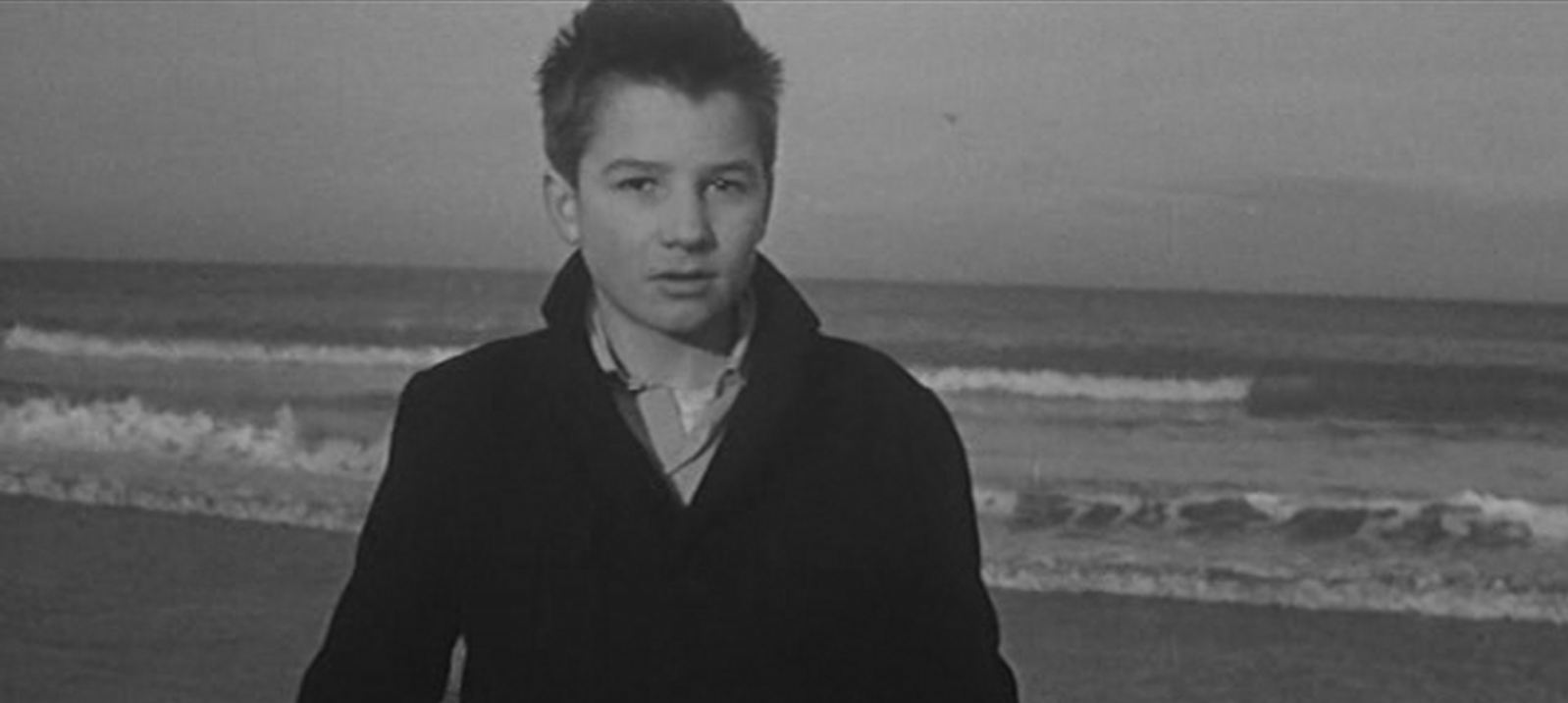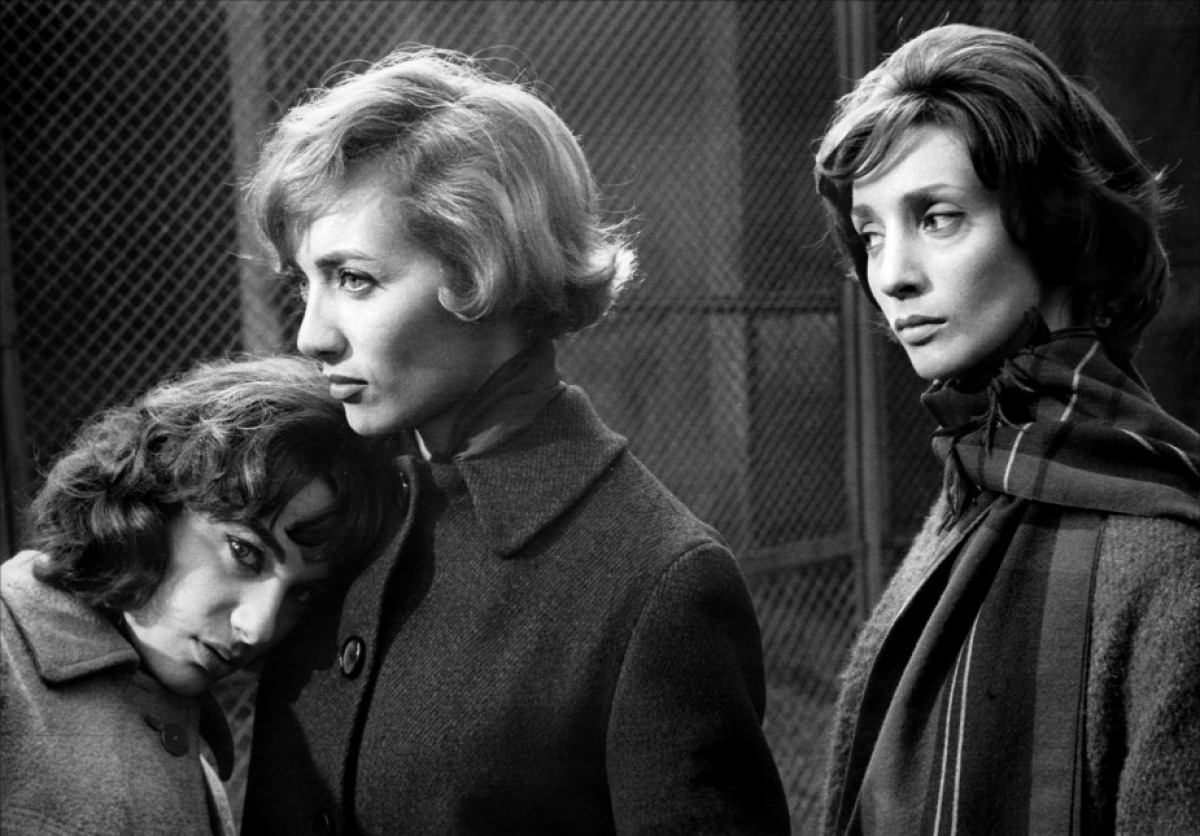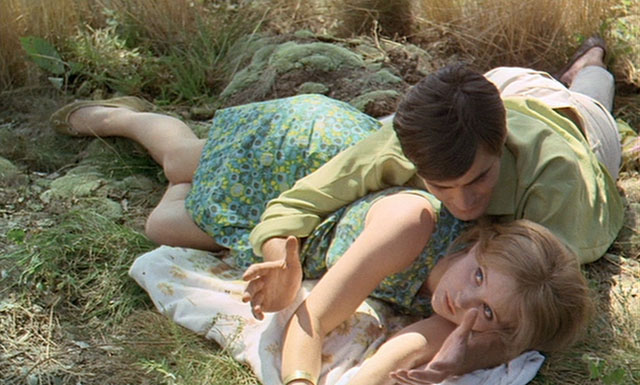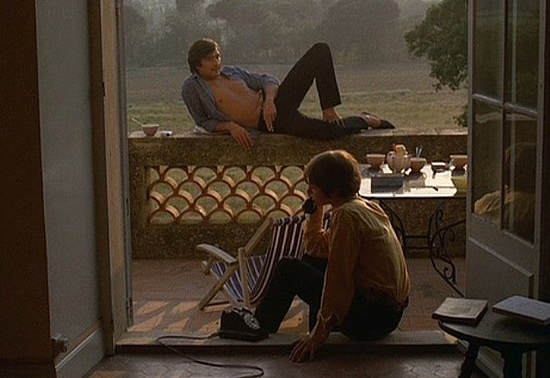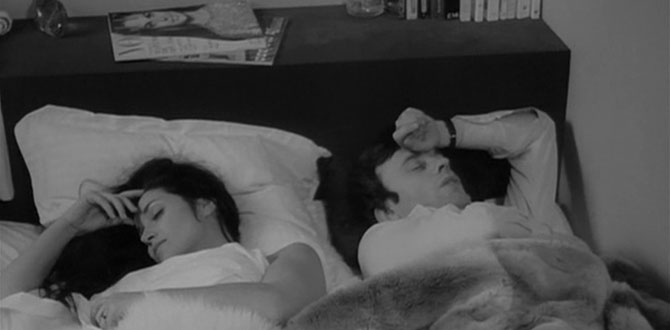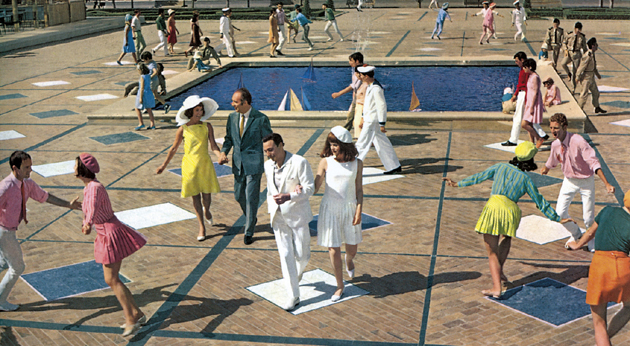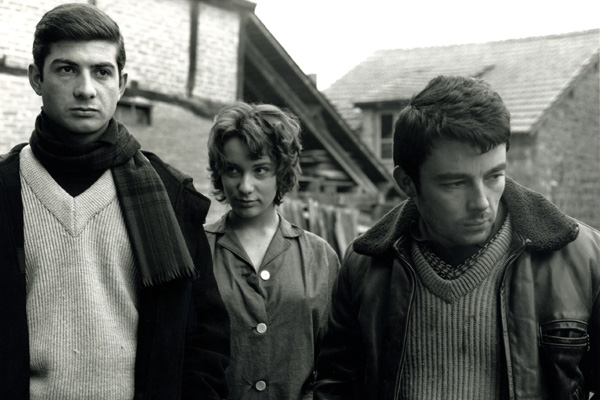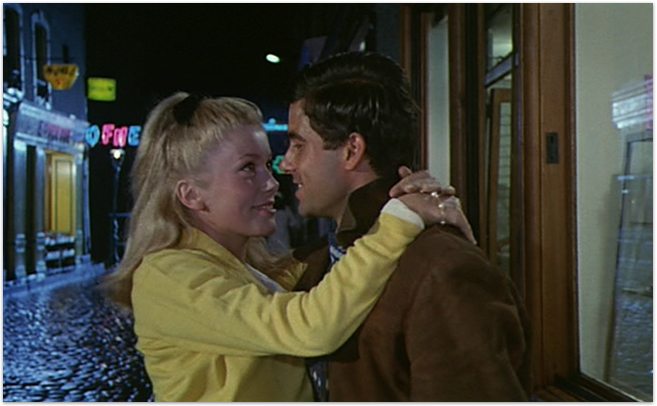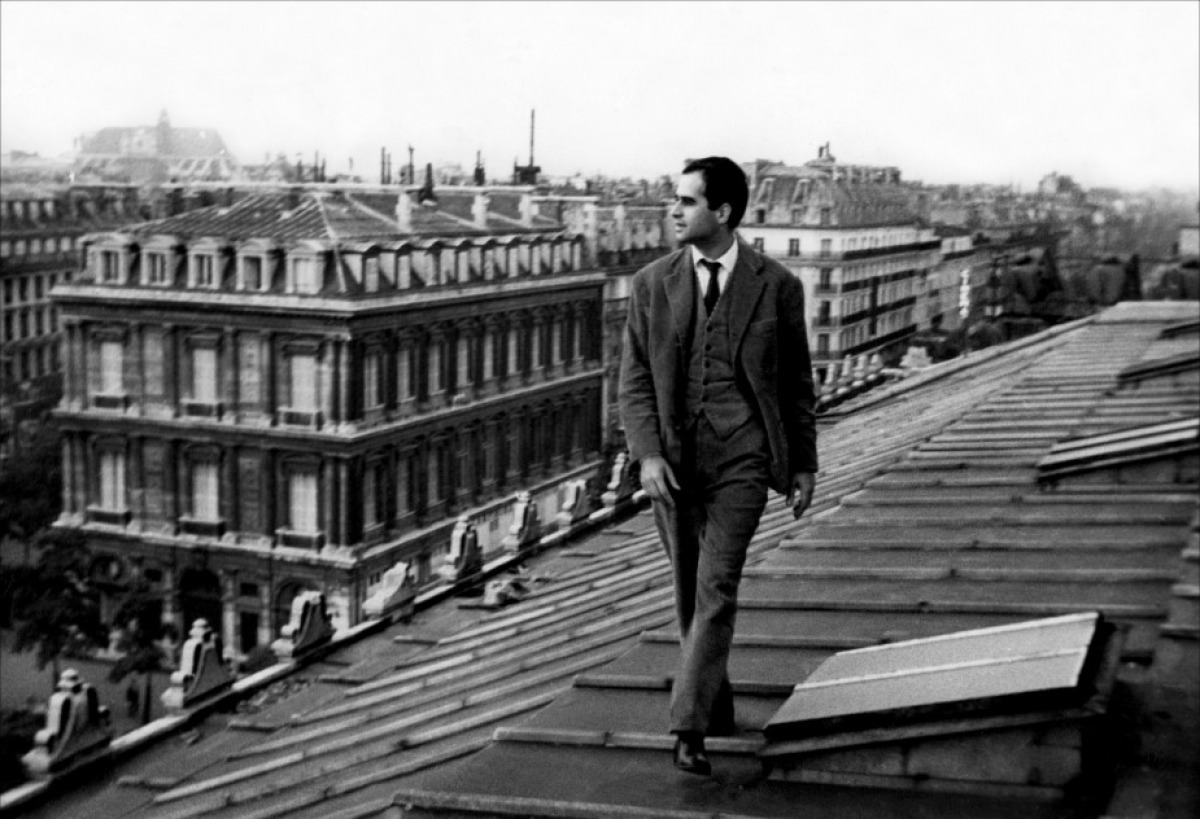Post-WWII France was a different environment for French cinema. Government funding and lighter cameras provided new opportunities for aspiring filmmakers, whose innovations – along with the general climate of European arthouse cinema – would help usher in a new modernist phase of filmmaking. Critics appropriated the term “Nouvelle Vague” – a phrase coined by L’Express journalist Françoise Giroud to describe French youths – to describe a particular faction of these modernist French filmmakers, but it did not come to represent all of the French filmmakers at the time.
It is a common belief that any French filmmaker from 1958 to 1969 was a part of the Nouvelle Vague, but the truth is that the movement only consisted of five critics-turned-directors: François Truffaut, Jean-Luc Godard, Eric Rohmer, Claude Chabrol, and Jacques Rivette. Under the direction of André Bazin, they wrote articles for Cahiers du Cinéma about their adoration for particular directors (Howard Hawks, Alfred Hitchcock, Roberto Rossellini, Nicholas Ray, etc.), who created a filmic language while still retaining their signature styles.
The cinematic obsessions of the Cahiers group led to François Truffaut’s renowned article, “Une certaine tendance du cinéma français (A Certain Tendency in French Cinema),” which critiqued the stagnant state of French cinema. Truffaut argued that French films had no distinct style, primarily due to the power that screenwriters had over the directors. French films, especially “le cinéma de qualité,” were out of touch with contemporary France, and Truffaut urged directors to take back the reins.
In 1959, Truffaut took his own advice to heart and made Les 400 coups (The 400 Blows), winning Best Director at the Cannes Film Festival and ushering in a new modernist era for him and his colleagues. This era encouraged the New Wave filmmakers to explore the extents/limitations of film as a medium, to discover their own filmic obsessions, and to define their own directorial styles.
While the New Wave filmmakers were making a splash, another group of filmmakers called la Rive Gauche (the Left Bank) were working on their own modernist films. This group consisted of Alain Resnais, Agnès Varda, Chris Marker, and Jacques Demy (loosely associated due to his marriage to Varda). Their close relationship to the Noveau Roman (New Novel) literary movement, which was led by Marguerite Duras and Alain Robbe-Grillet, influenced much of the Left Bank’s narrative experimentation/deconstruction.
The Left Bank and the New Wave were never in opposition, but they co-existed, and often times intermingled with one another. Each group’s ultimate goal was to expand film language and to find out what film could do.
Along with the New Wave and the Left Bank came a group of uncategorized French filmmakers who belonged to neither film movement. They included Robert Bresson, Jean-Pierre Melville, Jean Rouch, Roger Vadim, Henri-Georges Clouzot, and Louis Malle, just to name a few. These filmmakers established careers outside of these movements, and often times had to compete with the New Wave/Left Bank tendencies (watch Henri-Georges Clouzot’s Inferno to get a better idea of the effect this period had on Clouzot). Their films will not appear on this list, except in the case of Zazie dans le métro by Louis Malle (I’ll explain my reasoning later).
The New Wave and the Left Bank only lasted for a short period of time, but their iconic characters and filmic innovations had long-lasting effects on future filmmakers and film movements. My reverence for these two movements is what drives this article and my purpose is not only to create list of essential New Wave/Left Bank films, but to also help readers understand and distinguish between these two movements.
20. La réligieuse (Dir. Jacques Rivette, 1966) – New Wave
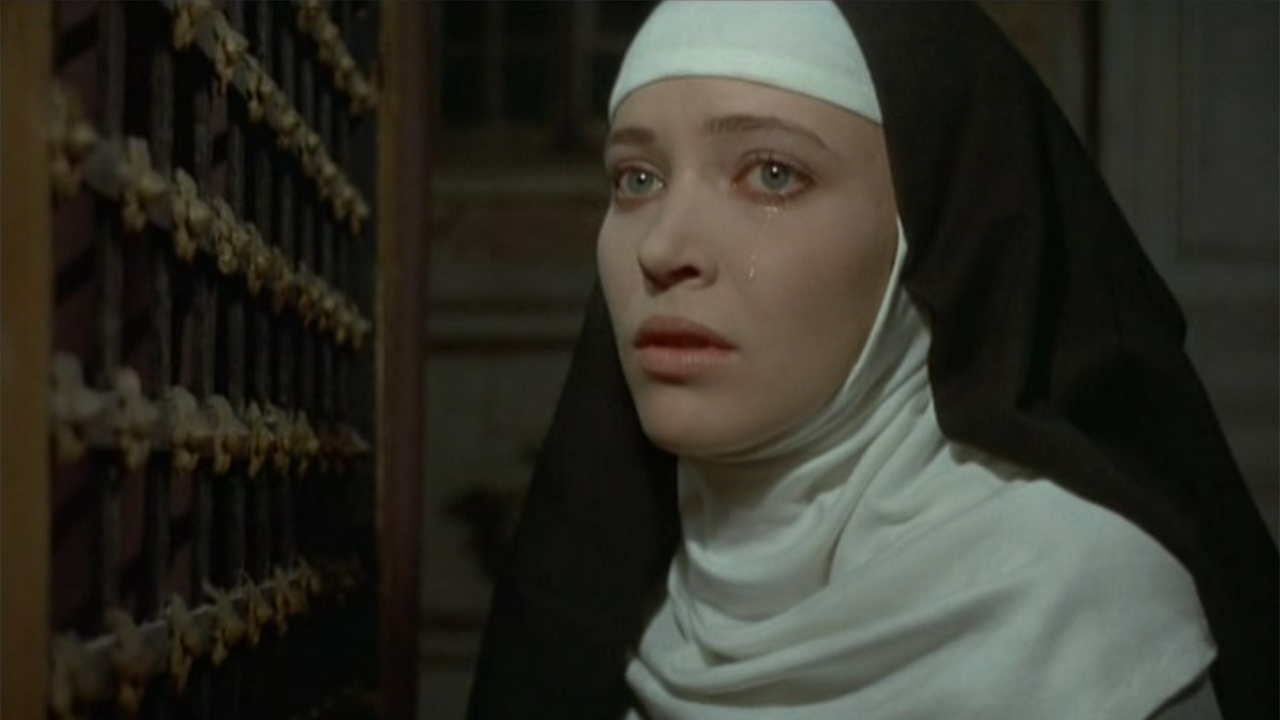
Rivette’s second feature stars Anna Karina – one of the biggest actresses of the French New Wave – as Suzanne Simonin, a nun who takes her vows at the command of her overbearing mother (who hides Suzanne’s illegitimacy from her husband). Suzanne goes through a rollercoaster of emotions and events, including recurring punishments, deaths, isolation, lecherous monks, and suicide.
The film was controversial at the time of its release, leading to a temporary ban and censorship. In spite of this controversy, it is one of Rivette’s most accessible works, creating a surprisingly linear narrative (which would be replaced in his future films by aimless plots, improvisation, long runtimes, and scenes of actors rehearsing).
19. Les bonnes femmes (Dir. Claude Chabrol, 1960) – New Wave
Les bonnes femmes (The Good Time Girls) plays with generic conventions and tone, shifting between Hitchcockian suspense and humor in order to tell the story of four Parisian shop girls who chase after their dreams (often resulting in disappointment and tragedy).
The brutally honest film proved unpopular in France when it was initially released, but contemporary critics have re-evaluated it. Many hail it as an unsung masterpiece and an early indication of Chabrol’s penchant for creating provocative thrillers.
18. Le bonheur (Dir. Agnès Varda, 1965) – Left Bank
François and Thérèse (real-life couple Jean-Claude and Claire Drouot) are happy with their provincial lifestyle, even when François begins an affair with a postal worker (Mare-France Boyer). When François finally admits to his wife that he wants to keep his family and continue his affair, Claire accepts, but she later drowns in a lake (either through suicide or an accident, it is never revealed).
Agnès Varda established herself as a feminist filmmaker by creating nuanced portraits of female characters, but her third feature, Le bonheur (Happiness) proved to be a disappointment to her devoted feminist followers. Happiness was labeled as a chauvinist fantasy, but that is just a facile way of analyzing her complex film. Happiness explores the nature of photography and still images, evaluating whether or not the photographic smile represents true happiness or masks a darker emotion.
17. La collectionneuse (Dir. Eric Rohmer, 1967) – New Wave
Rohmer’s fourth entry into his “Six Contes Moraux (Six Moral Tales)” follows three cohabitants of a Saint Tropez villa. The titular “collectionneuse” is Haydée (Haydée Politoff), a young woman who is judged by the narrator, Adrien (Patrick Bauchau), as being a collector of men.
This was Rohmer’s second feature film, which consisted of staples of Rohmer’s signature style: images of people traveling, the lack of non-diegetic music, intelligent and prolonged conversations, and themes of unfulfilled desire. It set the stage for future expectations, many of which were met enthusiastically by his next feature (which occupies the next slot on this list).
16. Ma nuit chez Maud (Dir. Eric Rohmer, 1969) – New Wave
The third entry of the “Six Moral Tales,” Ma nuit chez Maud (My night at Maud’s) was an international hit, and the entry point (for many) into Rohmer’s filmography. The film tells the story of a reserved Catholic man, Jean-Louis (Jean-Louis Trintignant), who spends the night with Maud (Françoise Fabian), a divorcee and non-practicing Protestant.
The film unfolds with the same techniques as La collectionneuse, including voice-over narration and intellectual conversations, but there is something so charming and magical about this film. It is a film about chance and reticence, exploring Jean Louis’ reluctance to give into the opportunities that are afforded to him. The film won the hearts of the international film community, as well as Oscar nominations for Best Original Screenplay and Best Foreign Language Film (winning neither, unfortunately).
15. Zazie dans le métro (Dir. Louis Malle, 1960) – New Wave Aesthetic (Belongs to neither group)
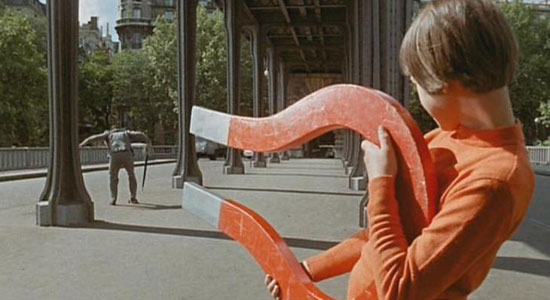
Based on the “unfilmable” novel by Raymond Queneau, Zazie follows the titular girl (Catherine Demongeot) who, while staying in Paris with her transvestite uncle, dreams of riding the metro. A strike by the metro workers leaves Zazie in disarray, but the precocious girl finds other (mis)adventures to keep her mind occupied.
Louis Malle, as previously stated, belonged to the outsider group of filmmakers who were neither New Wave nor Left Bank. Yet Malle’s third feature film, Zazie dans le métro (Zazie on the metro), created a blissfully insane aesthetic that could only be described as New Wave-esque (which is why I decided to include it in this list). Sight gags, explosions, doubles, car chases, unruly mobs, and colorful characters dominate the screen, creating a world without rules or regulations. Malle’s adaptation remains surprisingly faithful to the text, creating a film that is quite the treat for those who can endure the over-the-top zaniness.
14. Les demoiselles de Rochefort (Dir. Jacques Demy, 1967) – Left Bank
Random encounters define the lives of twin sisters Delphine and Solange (real-life sisters Catherine Deneuve and Françoise Dorléac), who dream of leaving Rochefort to work in Paris. An upcoming fair provides the twins (and their family) with chance opportunities and secret admirers, leading to a fantastic finale that ties every loose narrative thread into a perfect bow.
Demy’s reverence for the American musical was apparent, to the point where he casted Gene Kelly as one of the dancing/singing admirers. Although The Umbrellas of Cherbourg may have been Demy’s crowning achievement, it was Les demoiselles de Rochefort (The Young Girls of Rochefort) that created a truly sublime escapist fantasy. The film will charm your pants off and leave you grinning from ear to ear.
13. Le beau Serge and Les cousins (Dir. Claude Chabrol, 1958 and 1959) – New Wave
My reasoning for including the two Chabrols in one entry is because they come as a package deal. Each film has its own respective plot dealing with a sickly man returning to his hometown to convalesce (Le beau Serge) and a law student visiting his rowdy cousin (Les cousins).
The films are inverted images of one another, using the same actors (Jean-Claude Brialy and Gérard Blain) who swap roles between the two films. Le beau Serge (Handsome Serge) and Les cousins (The Cousins) are essential to the New Wave lexicon, creating tense and atmospheric dramas that are coated with Chabrol’s adoration of Hitchcockian themes and suspense.
12. Les parapluies de Cherbourg (Dir. Jacques Demy, 1964) – Left Bank
Guy (Nino Castelnuovo) and Geneviève (Catherine Deneuve, in her star making turn) are star-crossed lovers who are torn apart by the Algerian war. When their final night together results in Geneviève’s pregnancy, Geneviève is forced to either wait for Guy’s return or marry a wealthy businessman.
Demy creates a beautiful musical filled with a magnificent score and equally brilliant songs. Unlike the narrative experimentations of the Left Bank, and the stylistic explorations of the New Wave (especially Godard), Demy took a middle ground to create a perpetual world that ran on the energy of the characters’ songs and dances.
11. Paris nous appartient (Dir. Jacques Rivette, 1960) – New Wave
Paris nous appartient (Paris Belongs to Us) explores the aimless narrative of a murder mystery. The Parisian characters involved in the story all live with existential crises, suicidal tendencies, anxiety, and paranoia, creating a disillusioned climate of contemporary Paris.
Rivette’s first feature film is an intriguing, if not rough, look at the obsessions that Rivette would explore in his later films, including Rivette’s favorite: actors rehearsing for an upcoming performance. The film was unpopular with French audiences, but it gave a provocative, if not extremely pessimistic, view of bohemian Paris.
